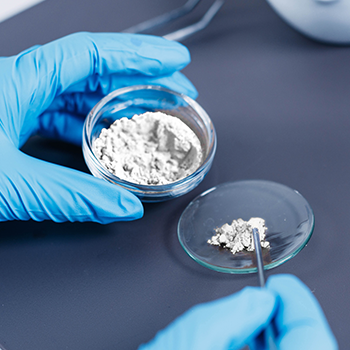Thickeners
A grease typically consists of three components: base oils, additives, and thickeners. The NLGI Lubricating Grease Guide Seventh Edition states a thickener is “the solid particles which are relatively uniformly dispersed to form the structure of lubricating grease in which the liquid is held by surface tension and other physical forces.”
Thickeners are what help distinguish greases from oils. Without thickener, a lubricating base oil would migrate. Thickeners are often compared to sponges as they play a critical role in keeping in oil in place. Aside from their role in maintaining the structure of a grease, different types of thickeners can offer increased thermal, shear, and oxidative stability as well as water resistance.
Types of Thickeners
Historically, thickeners have been classified as soaps or non-soaps. Soap thickened greases consist of organic, mixed and complex soaps. Soap thickeners are relatively low cost with good water resistance and work stability. Thickeners are used to achieve the desired consistency, which is displayed as an NLGI Grade. Some thickeners need to withstand temperatures significantly hotter than traditional soap greases can handle. Examples of non-soap thickeners include polyurea, calcium sulfonates, and polytetrafluoroethylene (PTFE). Others need to be inert due to material compatibility, or perhaps the lubricant is used in a corrosive or acidic environment. Furthermore, thickeners can be selected based on their rheological behavior and motion control properties.
To learn more about different soap and non-soap thickeners, explore our guides below.



